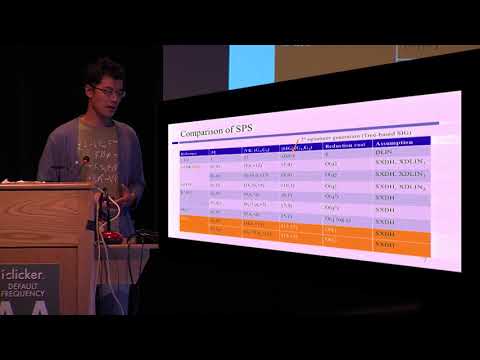Welcome to the resource topic for 2017/524
Title:
Compact Structure-preserving Signatures with Almost Tight Security
Authors: Masayuki Abe, Dennis Hofheinz, Ryo Nishimaki, Miyako Ohkubo, Jiaxin Pan
Abstract:In structure-preserving cryptography, every building block shares the same bilinear groups. These groups must be generated for a specific, a prior fixed security level, and thus it is vital that the security reduction of all involved building blocks is as tight as possible. In this work, we present the first generic construction of structure-preserving signature schemes whose reduction cost is independent of the number of signing queries. Its chosen-message security is almost tightly reduced to the chosen-plaintext security of a structure-preserving public-key encryption scheme and the security of Groth-Sahai proof system. Technically, we adapt the adaptive partitioning technique by Hofheinz (Eurocrypt 2017) to the setting of structure-preserving signature schemes. To achieve a structure-preserving scheme, our new variant of the adaptive partitioning technique relies only on generic group operations in the scheme itself. Interestingly, however, we will use non-generic operations during our security analysis. Instantiated over asymmetric bilinear groups, the security of our concrete scheme is reduced to the external Diffie-Hellman assumption with linear reduction cost in the security parameter, independently of the number of signing queries. The signatures in our schemes consist of a larger number of group elements than those in other non-tight schemes, but can be verified faster, assuming their security reduction loss is compensated by increasing the security parameter to the next standard level.
ePrint: https://eprint.iacr.org/2017/524
Talk: https://www.youtube.com/watch?v=gWVr6SFWCJA
See all topics related to this paper.
Feel free to post resources that are related to this paper below.
Example resources include: implementations, explanation materials, talks, slides, links to previous discussions on other websites.
For more information, see the rules for Resource Topics .
